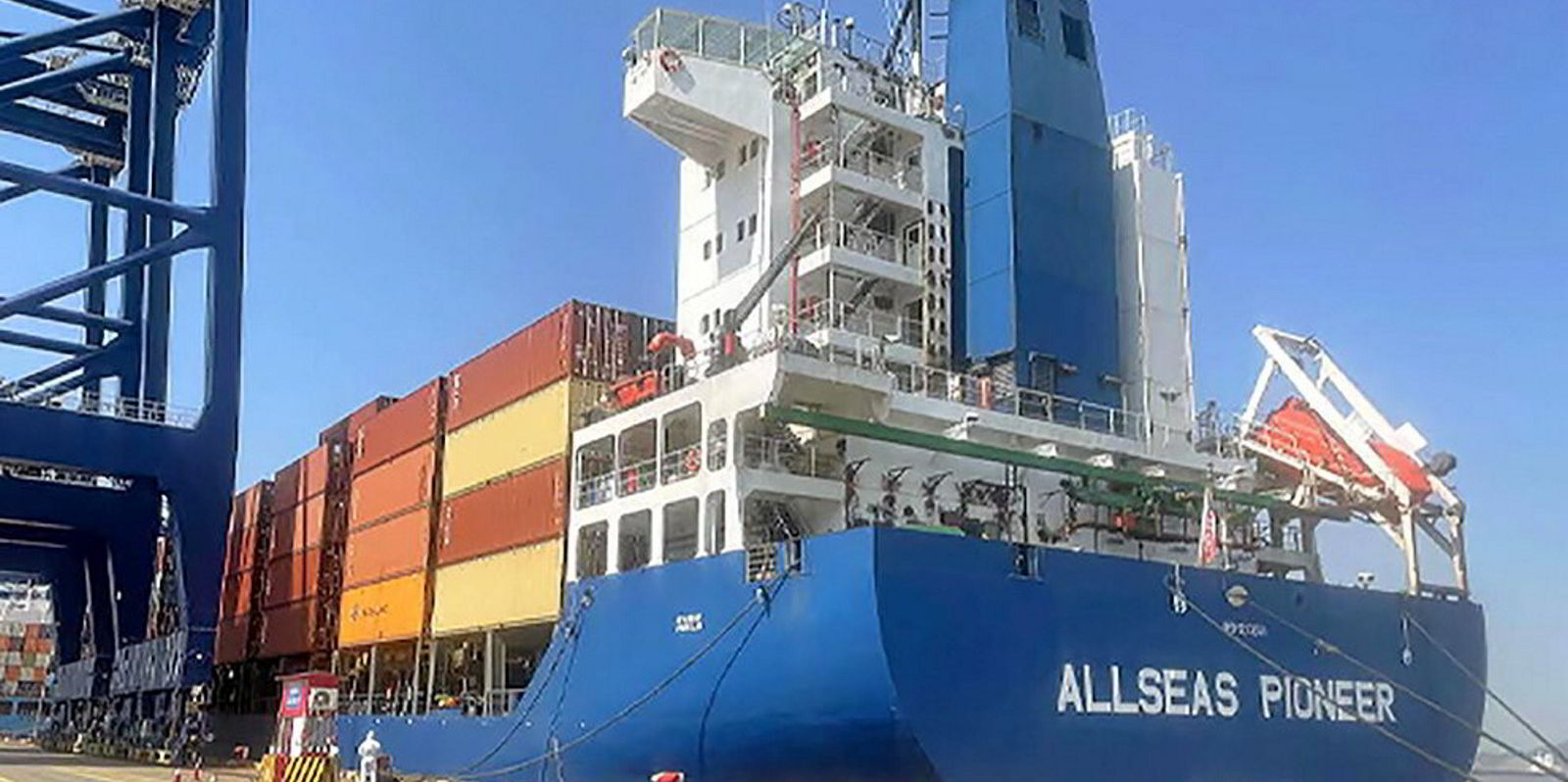A weakening container freight market has raised the prospect of carriers facing an all-out rate war in the next 12 months.
The early Chinese New Year on 22 January means factories in China and Vietnam will be closed for longer than normal.
Typically factories close for a fortnight, but they are expected to shut in early January for five weeks until the second week of February.
That points to a slow start to the year for liner companies, according to Ocean Network Express (ONE) chief executive Jeremy Nixon.
The Asian holidays mean container volumes will probably not recover until the second quarter of the year — if at all.
“[The year] 2021 was off the charts in terms of volumes, so it is not surprising we see negative growth rates,” Nixon told a recent seminar organised by the Port of Los Angeles.
Nixon said in December there are signs that transpacific freight rates are starting to bottom out.
That is partly due to efforts by carriers blanking sailings as they remove capacity to deal with plummeting rates.
Further falls
Spot rates on key trades out of Asia are 90% lower than a year ago.
The heaviest falls have been from Asia to the US West Coast (USWC) — a trade that had been the engine of the container shipping boom.
Rates slumped to $1,379 per 40-foot equivalent unit (feu) in the week before Christmas — down from $14,600 per feu a year earlier.
Analysts say prices could fall further, particularly for long-term contract rates.
Contract rates have been sliding for four months and remain 70% higher year-on-year, according to the XSI index.
Patrik Berglund, chief executive of the Oslo-based freight portal Xeneta, said: “This is really just the calm before the storm.
“All indicators point towards considerable rate drops from today’s levels, with several of the major Far East trades pointing towards new long-term contracts that are much closer to the currently far lower spot rate benchmarks.”
Let the battle commence
Liner operators normally blank services around the time of Chinese New Year to bring supply in line with demand.
However, that reduction in capacity is not set in stone this year.

In 2021 and 2022, shipping lines kept capacity high in order to cater to high demand.
“This year, deployed capacity during the Lunar holidays is slated to be higher than the deployed capacity in 2021, where demand was absolutely surging,” Danish consultancy firm Sea-Intelligence (SeaIntel) said.
It added that this might lead to “another price war, reminiscent of the one we saw in 2015/2016”.
“If demand continues to be sluggish, or outright contracts, given these capacity levels, freight rates will continue to tumble,” it said.
According to SeaIntel, Asia to the Mediterranean is the only trade where average capacity growth is close to pre-pandemic levels.
Christian Roeloffs, co-founder and chief executive of Container xChange — an online platform for container logistics — said: “In 2023, there is a high possibility of an all-out price war.
“It doesn’t seem that the capacity restrictions that we have seen in the past two years are due to return, so we’ll just have ample capacity both on the vessel as well as on the container side.
“With the competitive dynamics in the container shipping and liner industry, I don’t expect especially the big players to hold back, and we do expect prices to come down to almost variable costs. We also foresee market consolidation.”
In their hands
Benny Huygen, a manager with Kuehne + Nagel in Belgium, told a webinar that carriers can take out more capacity if they need to so their fate is in their own hands.
Carriers are also expected to slow steam to lower carbon emissions.

That means liner operators will require additional vessels for services out of Asia.
Other ships are expected to be dry docked and scrapping is expected to pick up.
Hapag Lloyd chief executive Rolf Habben Jansen said much of the additional capacity from newbuildings to be delivered in 2023 will likely be needed.
Therefore, the coming weeks provide an opportunity for shippers to take advantage of the weaker freight market.
“Into the year 2023, freight forwarders will be able to go window shopping quite a lot, and there’s going to be a lot of room for negotiation, especially in the early parts of the year,” Roeloffs said.






